Search Result
Results for "
antinociceptive effects
" in MedChemExpress (MCE) Product Catalog:
5
Isotope-Labeled Compounds
| Cat. No. |
Product Name |
Target |
Research Areas |
Chemical Structure |
-
- HY-P3870A
-
|
|
Opioid Receptor
|
Neurological Disease
|
|
DALDA acetate is a potent and highly selective μ-opioid receptor agonist with a Ki of 1.69 nM. DALDA acetate shows antinociceptive and respiratory effects .
|
-
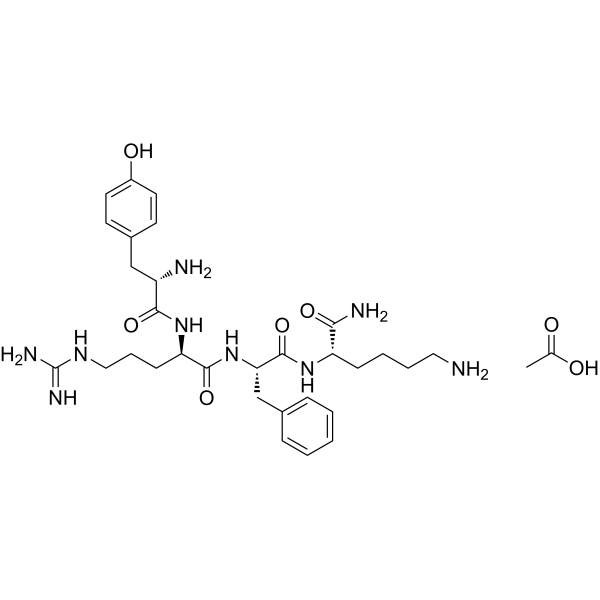
-
- HY-N9502
-
|
|
Others
|
Neurological Disease
|
|
Linalool oxide is a secondary metabolite in elongating wheat plants with antinociceptive and anticonvulsant effects. Linalool oxide shows anxiolytic activity .
|
-
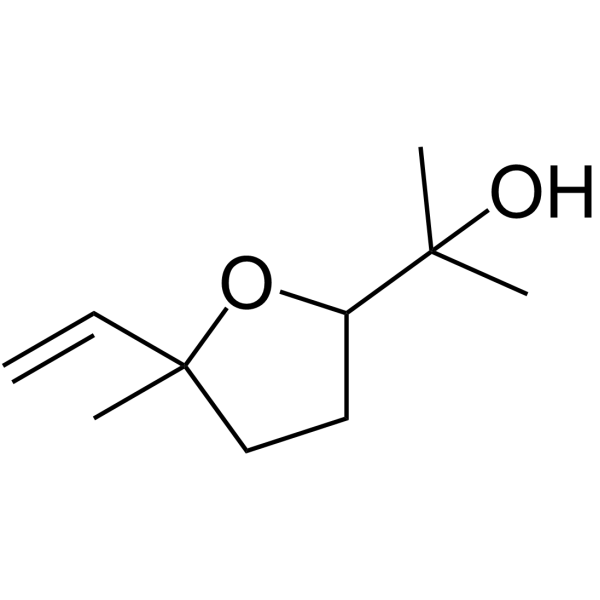
-
- HY-145169
-
|
|
Sodium Channel
|
Neurological Disease
|
|
AZ194 is a first-in-class, orally active inhibitor of CRMP2-Ubc9 interaction and inhibitor of NaV1.7 (IC50=1.2 μM). AZ194 blocks SUMOylation of CRMP2 to selectively reduce the amount of surface-expressed NaV1.7. Antinociceptive effects .
|
-
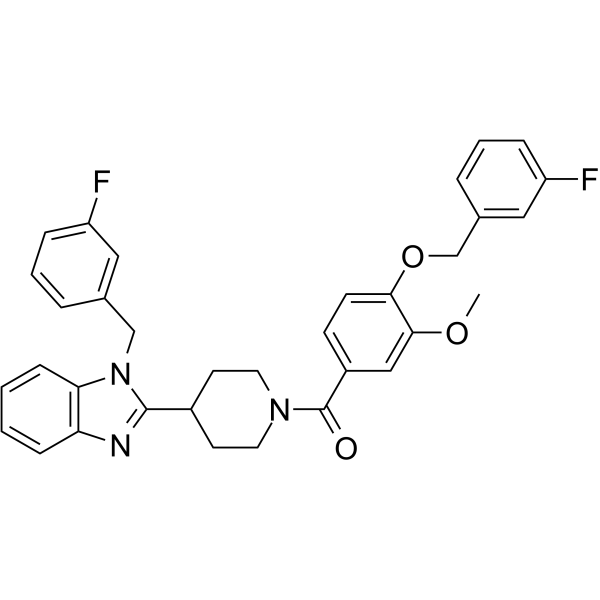
-
- HY-N0388
-
|
|
Others
|
Neurological Disease
|
|
Gelsemine, an alkaloid from the Chinese herb Gelsemium elegans, is effective in mitigating chronic pain. Antinociceptive effects.
|
-

-
- HY-P3870
-
|
|
Opioid Receptor
|
Neurological Disease
|
|
DALDA is a potent and highly selective μ-opioid receptor agonist with a Ki of 1.69 nM. DALDA shows antinociceptive and respiratory effects .
|
-
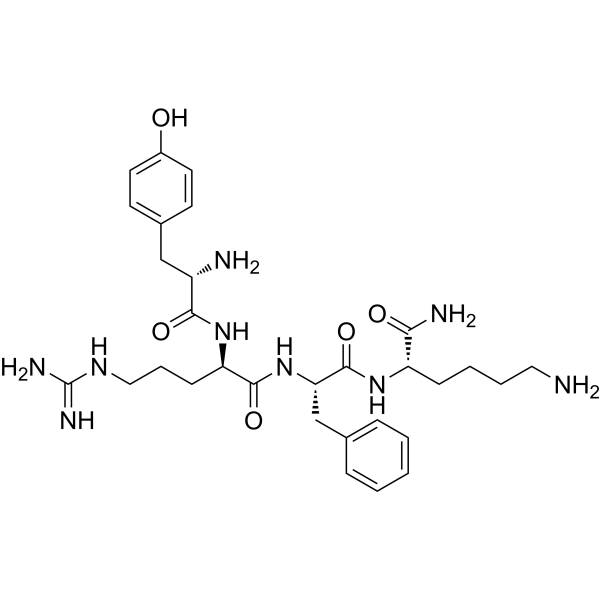
-
- HY-103341
-
-
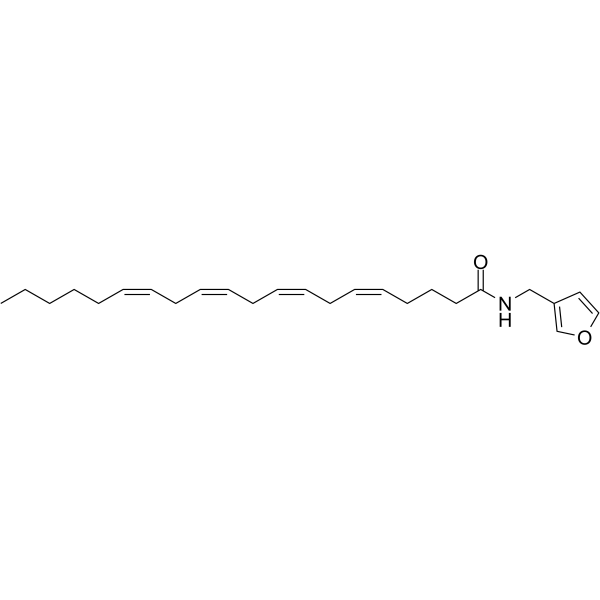
-
- HY-N0037
-
|
|
Reactive Oxygen Species
|
Inflammation/Immunology
|
|
Albiflorin, a major constituent contained in peony root, is a monoterpene glycoside with neuroprotective effects. Albiflorin also has anti-inflammatory, antioxidant and antinociceptive effects .
|
-
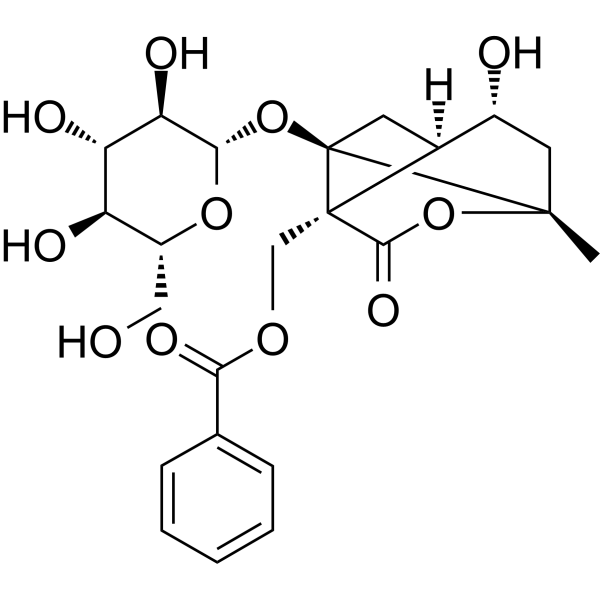
-
- HY-N7083
-
Citral
1 Publications Verification
|
Others
|
Inflammation/Immunology
Cancer
|
|
Citral is a monoterpene found in Cymbopogon citratus essential oil, with antihyperalgesic, anti-nociceptive and anti-inflammatory effects .
|
-
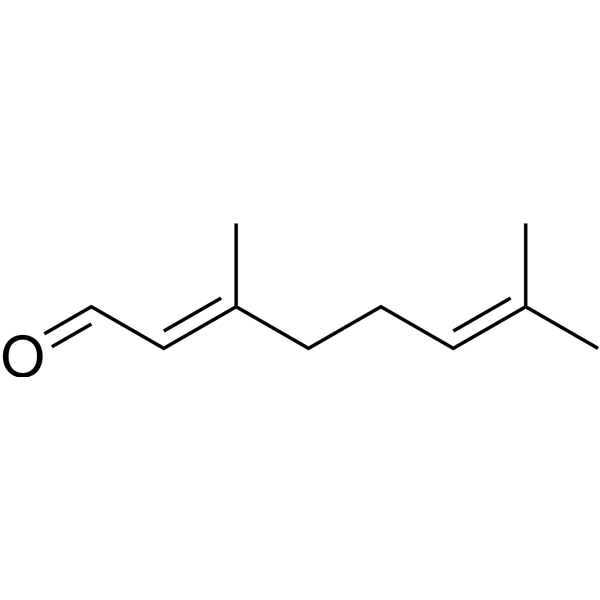
-
- HY-N0628
-
-
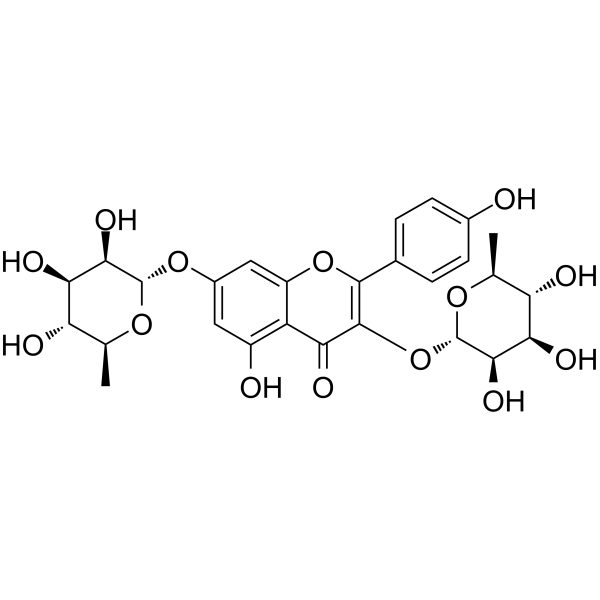
-
- HY-78131B
-
|
(R)-Ibuprofen
|
NF-κB
|
Inflammation/Immunology
Cancer
|
|
(R)-(-)-Ibuprofen is the R enantiomer of Ibuprofen, inactive on COX, inhibits NF-κB activation; (R)-(-)-Ibuprofen exhibits anti-inflammatory and antinociceptive effects.
|
-

-
- HY-108667
-
|
|
P2X Receptor
|
Others
|
|
TNP-ATP triethylammonium is a selective P2X receptor antagonist. TNP-ATP triethylammonium shows antinociceptive effects in rats .
|
-

-
- HY-107741
-
|
|
Opioid Receptor
|
Neurological Disease
|
|
SNC162 is a delta-opioid receptor agonist with an IC50 of 0.94 nM. SNC162 has antidepressant-like effects and produces a selective enhancement of the antinociceptive effects of fentanyl in rhesus monkeys .
|
-
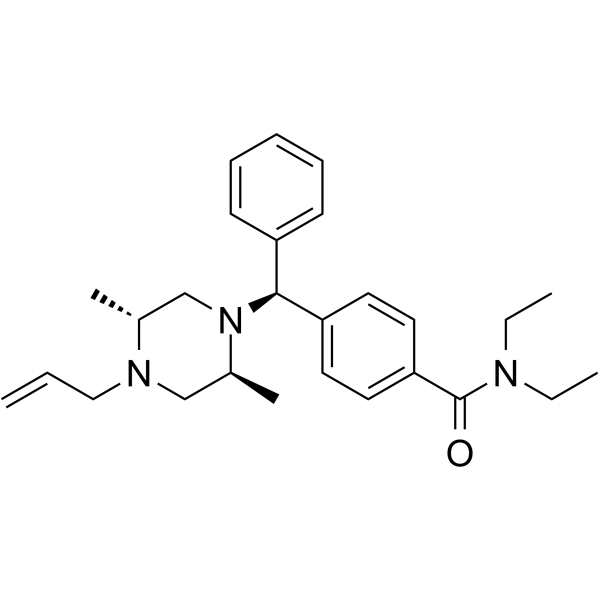
-
- HY-118785
-
-
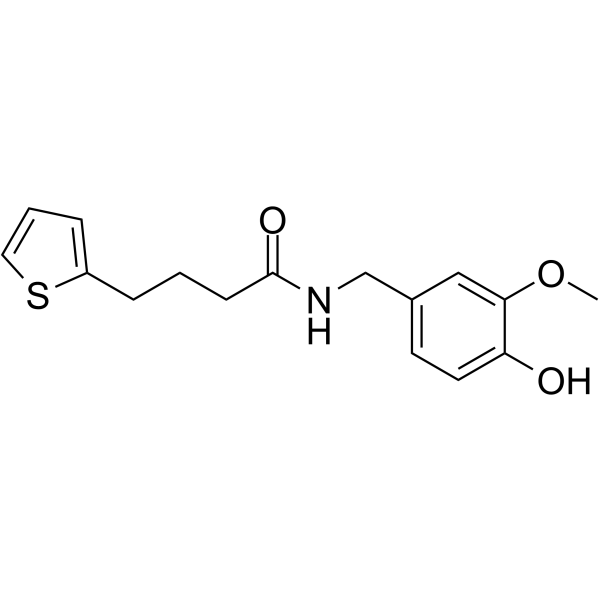
-
- HY-P3870B
-
|
|
Opioid Receptor
|
Neurological Disease
|
|
DALDA TFA is a potent and highly selective μ-opioid receptor agonist with a Ki of 1.69 nM. DALDA TFA shows antinociceptive and respiratory effects .
|
-
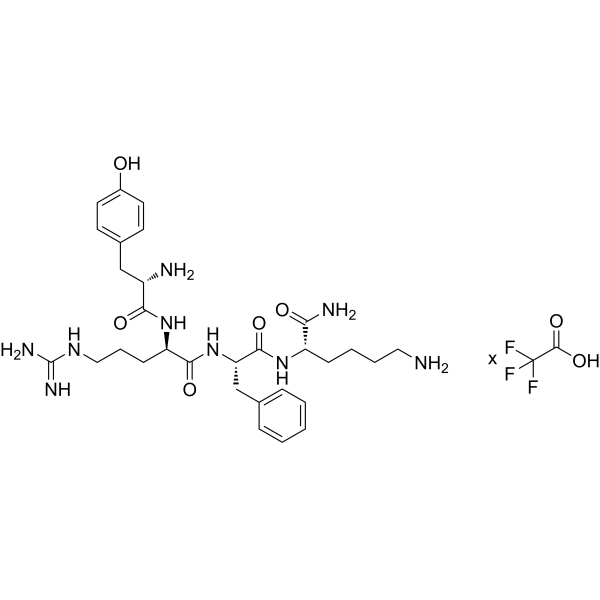
-
- HY-W436270
-
|
|
Dopamine Receptor
|
Neurological Disease
Inflammation/Immunology
|
|
Bulbocapnine hydrochloride, an aporphine alkaloid, is a dopamine receptor inhibitor. Bulbocapnine hydrochloride inhibits dopamine synthesis. Bulbocapnine hydrochloride also has neuroleptic-like, anticonvulsant and antinociceptive effects .
|
-
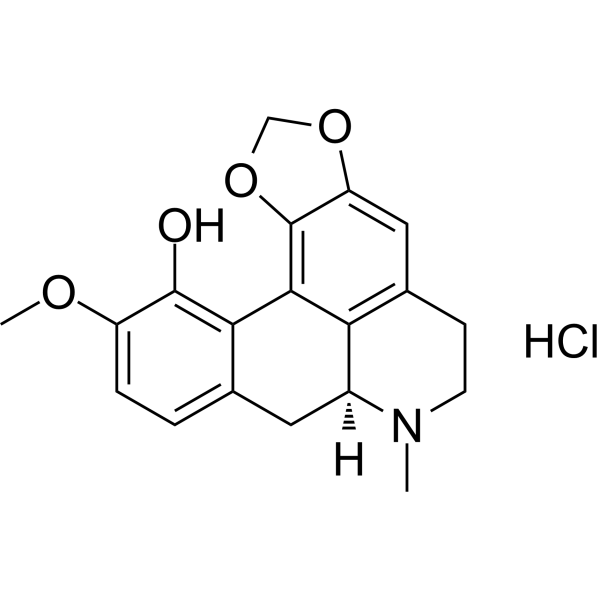
-
- HY-137988
-
-
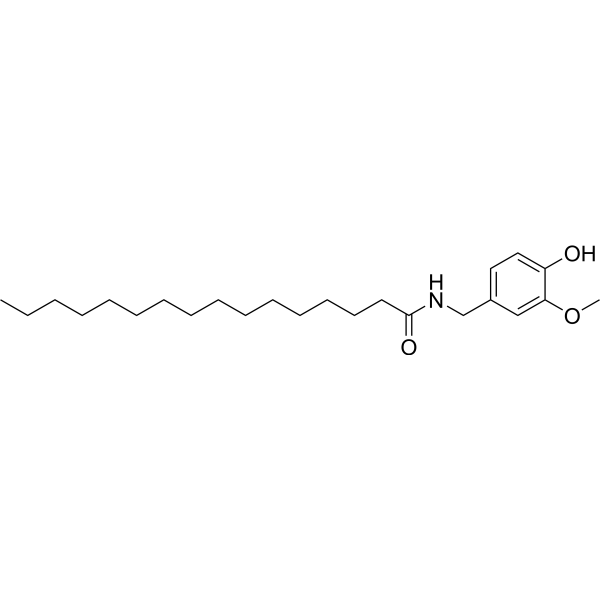
-
- HY-69019
-
-
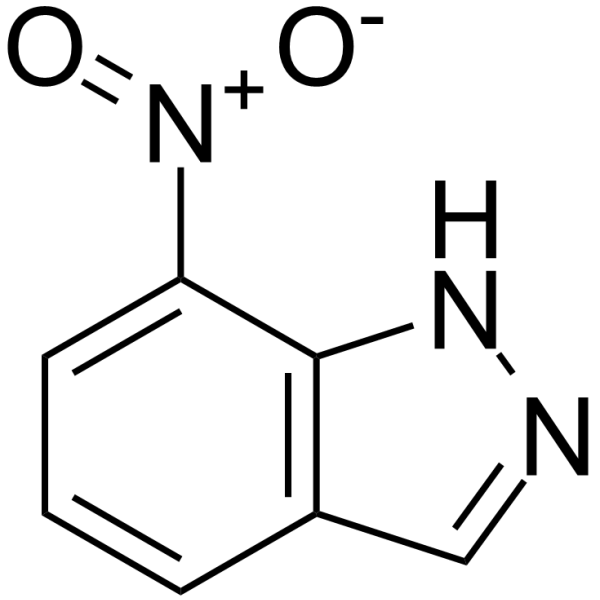
-
- HY-N7144A
-
|
|
Apoptosis
|
Infection
Cancer
|
|
Citronellyl acetate is a monoterpene product of the secondary metabolism of plants, with antinociceptive activity. Citronellyl acetate exhibits pro-apoptotic activity in human hepatoma cells. Citronellyl acetate shows fungicidal, larvicidal, bactericidal and repelling/insecticidal effects .
|
-
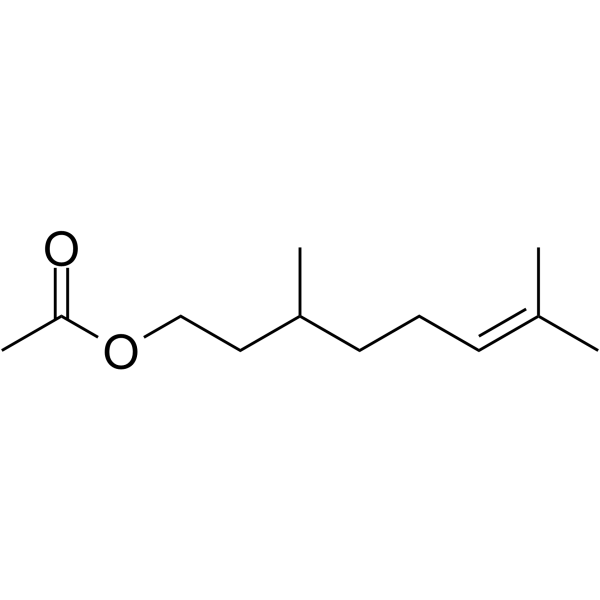
-
- HY-78131BS
-
|
(R)-Ibuprofen-d3
|
NF-κB
|
Inflammation/Immunology
Cancer
|
|
(R)-(-)-Ibuprofen-d3 is the deuterium labeled (R)-(-)-Ibuprofen. (R)-(-)-Ibuprofen is the R enantiomer of Ibuprofen, inactive on COX, inhibits NF-κB activation; (R)-(-)-Ibuprofen exhibits anti-inflammatory and antinociceptive effects.
|
-

-
- HY-P1795
-
-

-
- HY-148166
-
|
|
Nucleoside Antimetabolite/Analog
|
Others
|
|
L-Inosine is the L-configuration of Inosine (HY-N0092). Inosine is an endogenous purine nucleoside produced by catabolism of adenosine. Inosine has anti-inflammatory, antinociceptive, immunomodulatory and neuroprotective effects .
|
-

-
- HY-100812
-
|
|
|
|
|
2-Hydroxysaclofen is a potent γ-amino-butyric-acid-B (GABAB) receptor antagonist. 2-Hydroxysaclofen can abolish nicotine-induced hypolocomotor effects and increases the antinociceptive effects. 2-Hydroxysaclofen can stimulate luteinizing hormone (LH) secretion in female rats .
|
-

-
- HY-112692
-
|
|
Opioid Receptor
|
Neurological Disease
|
|
AT-121 is a bifunctional nociception and mu opioid receptor agonist, with Kis of 3.67 and 16.49 nM, respectively. AT-121 is a safe, non-addictive analgesic, and shows antinociceptive and antiallodynic effects .
|
-
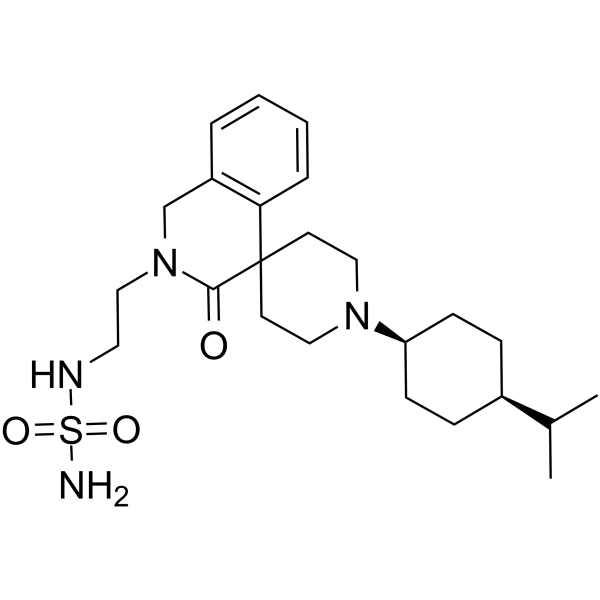
-
- HY-112692A
-
|
|
Opioid Receptor
|
Neurological Disease
|
|
AT-121 hydrochloride is a bifunctional nociception and mu opioid receptor agonist, with Kis of 3.67 and 16.49 nM, respectively. AT-121 hydrochloride is a safe, non-addictive analgesic, and shows antinociceptive and antiallodynic effects .
|
-
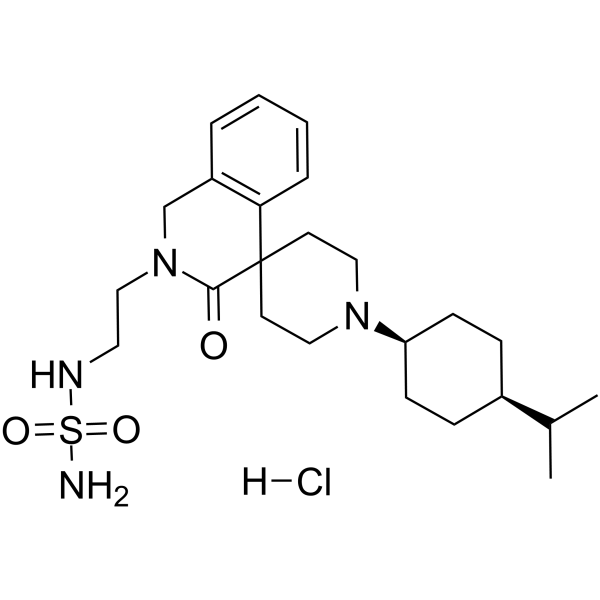
-
- HY-N0092S1
-
-

-
- HY-N0746
-
|
|
Others
|
Cancer
|
|
Oxysophocarpine is an alkaloid extracted from Sophora alopecuroides. Oxysophocarpine has neuroprotective and anti-nociceptive effects on the central and peripheral nervous systems . Oxysophocarpine inhibits the growth and metastasis of oral squamous cell carcinoma (OSCC) .
|
-

-
- HY-151949
-
|
|
Trk Receptor
|
Neurological Disease
|
|
TrkA-IN-4, a potent, orally active and allosteric TrkA inhibitor, is a proagent of TrkA-IN-3 (IC50=22.4 nM, HY-151948). TrkA-IN-4 exhibits potent antinociceptive effects .
|
-
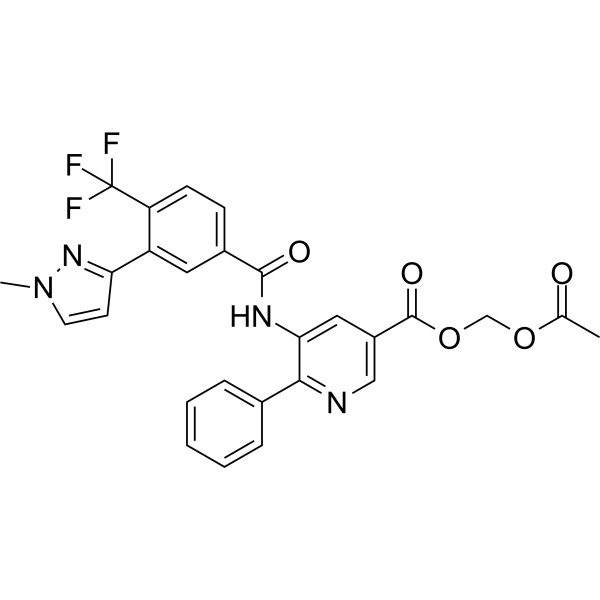
-
- HY-108964
-
|
|
Bacterial
|
Infection
Neurological Disease
Inflammation/Immunology
|
|
Carvone is a ketone monoterpene found mostly in the essential oils from plants of the genus Mentha. Carvone is widely used in the pharmaceutical industry, cosmetics and agriculture. Carvone has such effects as antimicrobial, antioxidant, anti-inflammatory, antispasmodic, antinociceptive, anticonvulsant .
|
-
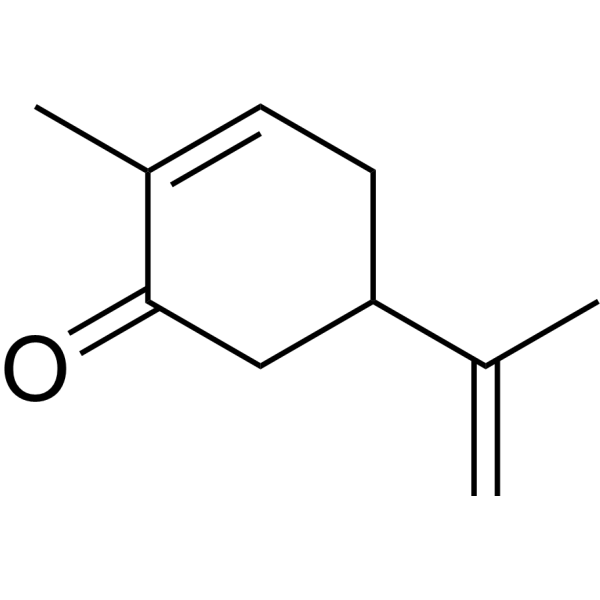
-
- HY-14316
-
|
Ebanicline; ABT-594
|
nAChR
|
Neurological Disease
|
|
Tebanicline, an analogue of epibatidine, is a neuronal nicotinic acetylcholine receptor agonist. Tebanicline exhibits potent antinociceptive effects and has a high affinity for the α4β2 neuronal nicotinic acetylcholine receptor subunit in the central nervous system.
|
-

-
- HY-N0092
-
-
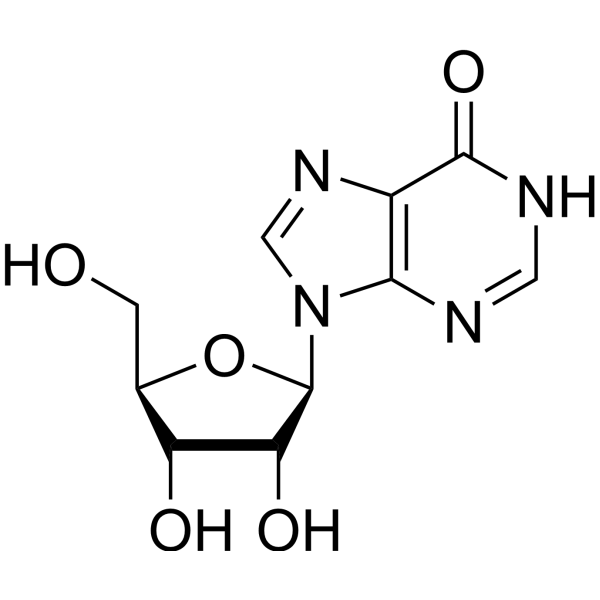
-
- HY-N2165
-
-
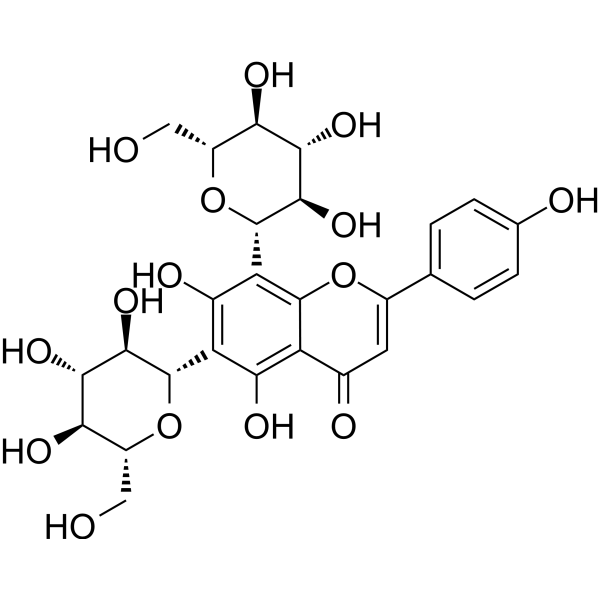
-
- HY-122219
-
|
|
CCR
|
Inflammation/Immunology
|
|
R243 is a potent and selective CCR8 antagonist. R243 inhibits CCL1/CCR8 interaction and inhibits CCR8 signaling and chemotaxis. R243 has antinociceptive and anti-inflammatory effects .
|
-
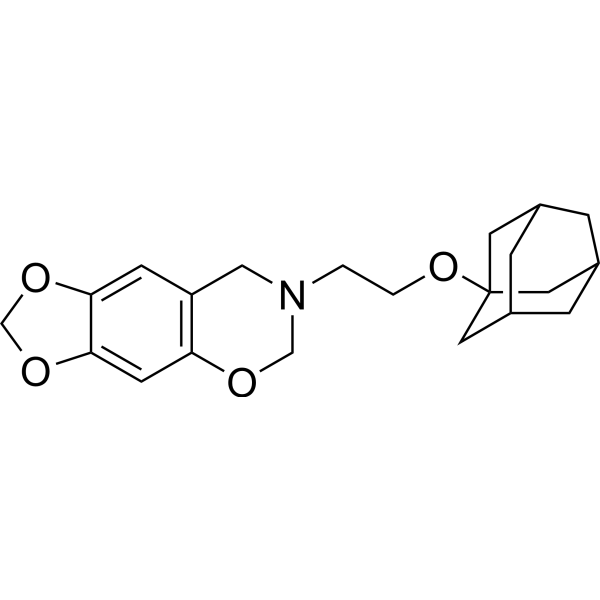
-
- HY-145628
-
|
|
Sigma Receptor
|
Neurological Disease
Inflammation/Immunology
|
|
CM398 is a highly selective, orally active sigma-2 receptor ligand (Ki=0.43 nM), with high sigma-1/sigma-2 selectivity rato (1000-fold). CM398 shows notable affinity for dopamine (Ki=32.90 nM) and serotonin transporters (Ki=244.2 nM). CM398 shows promising anti-inflammatory analgesic effects in the formalin model of inflammatory pain in mice .
|
-
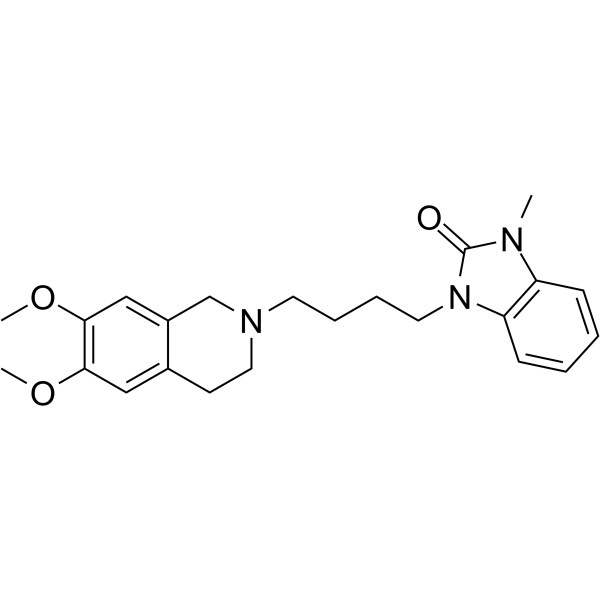
-
- HY-N0092S4
-
|
|
Isotope-Labeled Compounds
|
Others
|
|
Inosine-13C3 is a 13C-labeled Inosine that can be used in pharmacokinetic studies of Inosine. Inosine is an agonist of adenosine receptors A1R and A2AR with anti-inflammatory immunomodulatory, antinociceptive and neuroprotective effects .
|
-
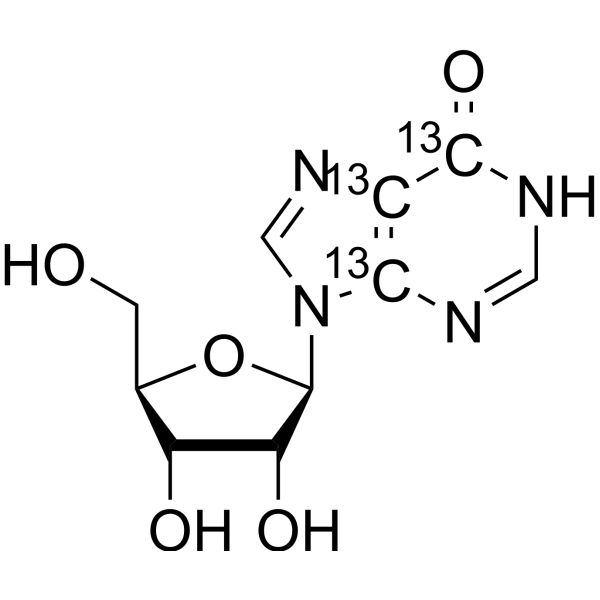
-
- HY-N9854
-
|
|
Potassium Channel
|
Inflammation/Immunology
|
|
Icariside E4 is an antinociceptive agent, and can be isolated from Tabebuia roseo-alba. Icariside E4 has peripheral analgesic activity by ATP-sensitive K + channel-dependent mechanisms. Icariside E4 also has anti-oxidant, anti-Alzheimer and anti-inflammatory effects .
|
-
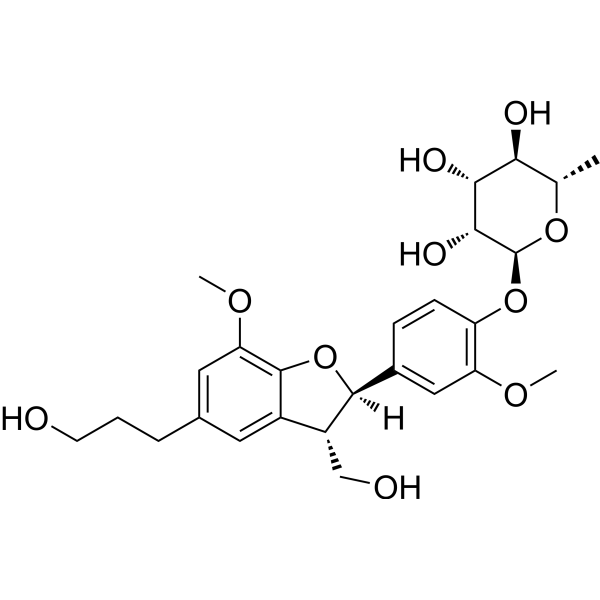
-
- HY-128865
-
|
|
Opioid Receptor
|
Neurological Disease
|
|
BPR1M97 is a dual-acting mu opioid receptor (MOP) and nociceptin-orphanin FQ peptide (NOP) receptor agonist with Ki values of 1.8 and 4.2 nM, respectively. BPR1M97 shows high potency and blood-brain barrier penetration, and produces potent antinociceptive effects .
|
-
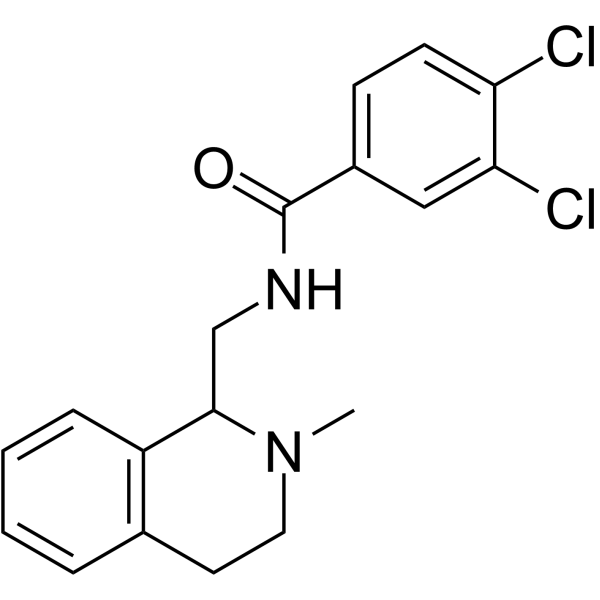
-
- HY-110150
-
UNC3230
5 Publications Verification
|
Others
|
Inflammation/Immunology
Cancer
|
|
UNC3230 is a potent, selective and ATP-competitive PIP5K1C inhibitor with an IC50 of ~41 nM. UNC3230 also inhibits PIP4K2C and does not inhibit any of the other lipid kinases that regulate phosphoinositide levels. UNC3230 has antinociceptive and anticancer effects .
|
-
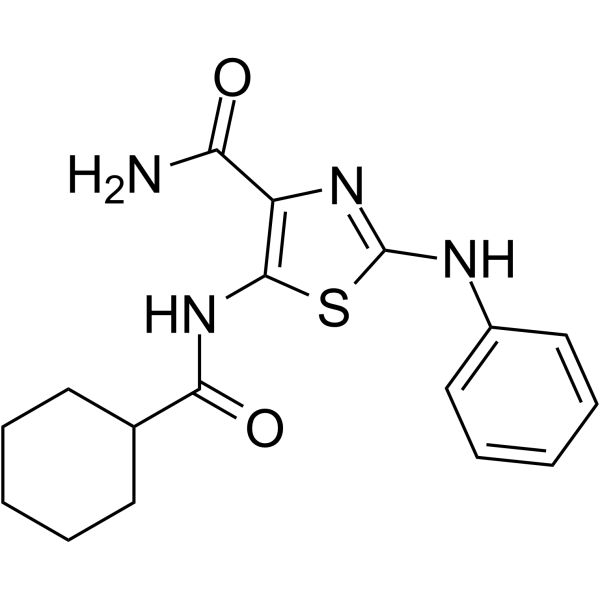
-
- HY-101379A
-
|
|
Calcium Channel
|
Cardiovascular Disease
Neurological Disease
|
|
8-Bromo-cGMP sodium, a membrane-permeable analogue of cGMP, is a PKG (protein kinase G) activator. 8-Bromo-cGMP sodium significantly inhibits Ca 2+ macroscopic currents and impairs insulin release stimulated with high K + . 8-Bromo-cGMP sodium has antinociceptive effects and results in vasodilator responses .
|
-

-
- HY-N5025
-
|
|
P2X Receptor
Apoptosis
|
Inflammation/Immunology
Cancer
|
|
Bullatine A, a diterpenoid alkaloid of the genus Aconitum, possesses anti-rheumatic, anti-inflammatory and anti-nociceptive effects. Bullatine A is a potent P2X7 antagonist, inhibits ATP-induced cell death/apoptosis and P2X receptor-mediated inflammatory responses . Bullatine A attenuates pain hypersensitivity, regardless of the pain models employed .
|
-
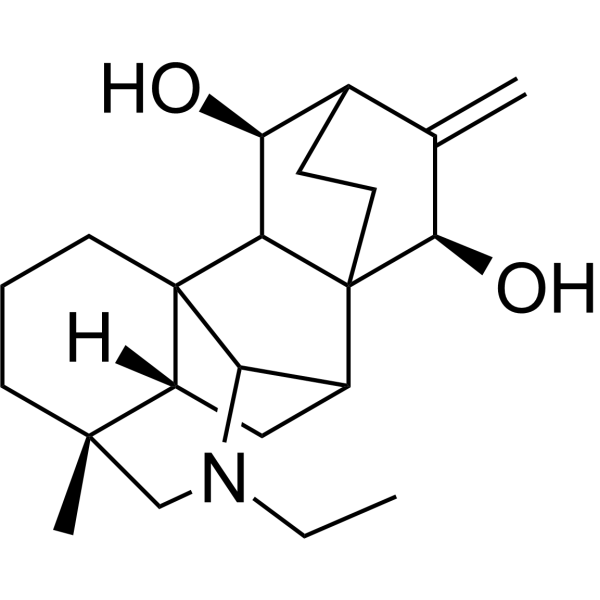
-
- HY-130605
-
|
|
P2X Receptor
|
Neurological Disease
|
|
BAY-1797 is a potent, orally active, and selective P2X4 antagonist, with an IC50 of 211 nM against human P2X4. BAY-1797 displays no or very weak activity on the other P2X ion channels. BAY-1797 shows anti-nociceptive and anti-inflammatory effects .
|
-
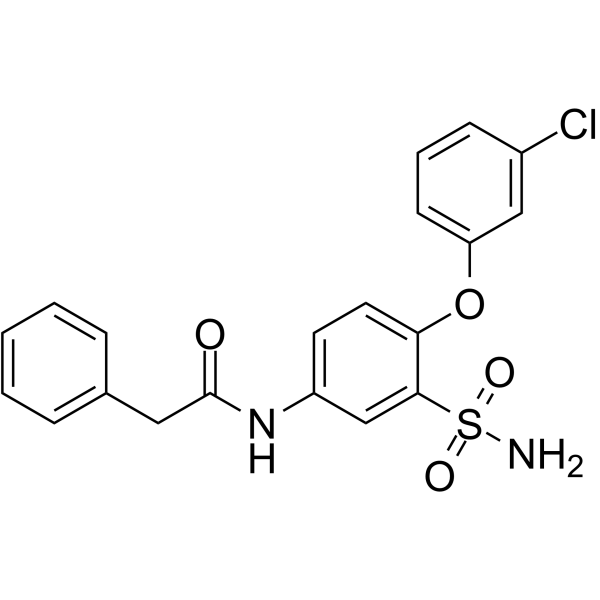
-
- HY-N0092S
-
-
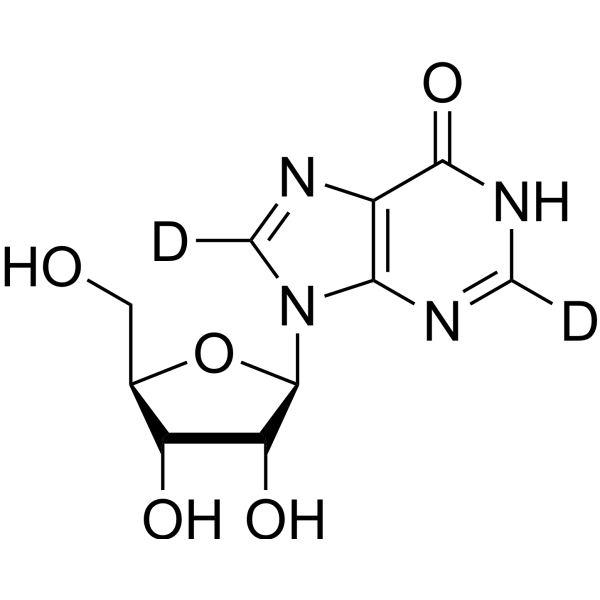
-
- HY-N6962
-
|
|
TRP Channel
COX
Bacterial
|
Infection
Neurological Disease
|
|
α-Spinasterol, isolated from Melandrium firmum, has antibacterial activity . α-Spinasterol is a transient receptor potential vanilloid 1 (TRPV1) antagonist, has anti-inflammatory, antidepressant, antioxidant and antinociceptive effects. α-Spinasterol inhibits COX-1 andCOX-2 activities with IC50 values of 16.17 μM and 7.76 μM, respectively .
|
-
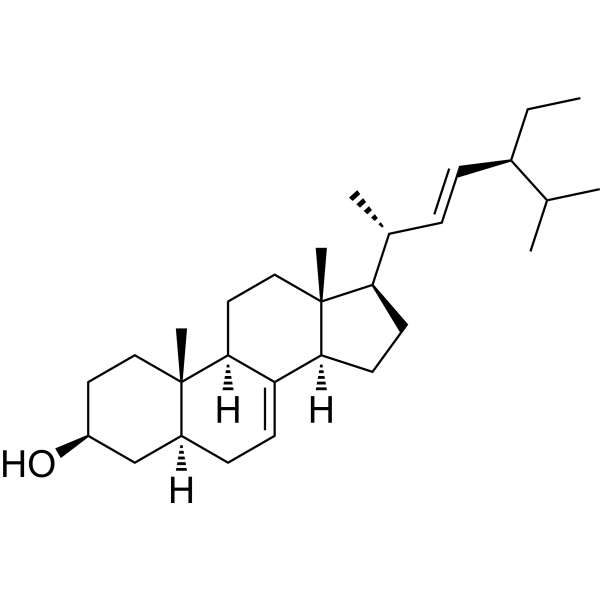
-
- HY-101202A
-
|
(Rac)-NIH 10815
|
Opioid Receptor
|
Neurological Disease
|
|
(Rac)-SNC80 is a racemate of SNC80 (HY-101202). SNC80 (NIH 10815) is a potent, highly selective and non-peptide δ-opioid receptor agonist with a Ki of 1.78 nM and an IC50 of 2.73 nM. SNC80 shows antinociceptive, antihyperalgesic and antidepressant‐like effects. SNC80 has the potential for multiple headache disorders treatment .
|
-
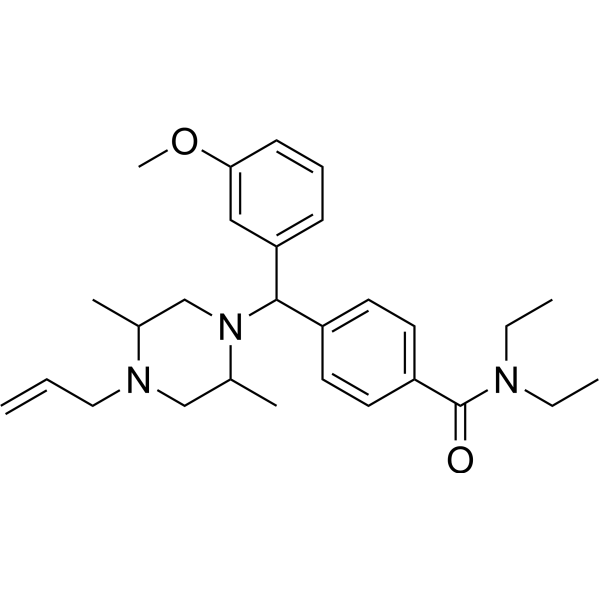
-
- HY-N0092S3
-
-

-
- HY-108485
-
|
|
Src
Apoptosis
Fungal
|
Infection
Inflammation/Immunology
Cancer
|
|
Damnacanthal is an anthraquinone isolated from the root of Morinda citrifolia. Damnacanthal is a highly potent, selective inhibitor of p56 lck tyrosine kinase activity. Natural Damnacanthal inhibits p56 lck autophosphorylation and phosphorylation of exogenous substrates with IC50s of 46 nM and 220 nM, respectively. Damnacanthal is a potent inducer of apoptosis with anticancer activity. Damnacanthal also has antinociceptive, anti-inflammatory effects in mice and anti-fungal activity against Candida albicans .
|
-

-
- HY-101202
-
|
NIH 10815
|
|
|
|
SNC80 (NIH 10815) is a potent, highly selective and non-peptide δ-opioid receptor agonist with a Ki of 1.78 nM and an IC50 of 2.73 nM. SNC80 also selectively activates μ-δ heteromer in HEK293 cells with an EC50 of 52.8 nM. SNC80 shows antinociceptive, antihyperalgesic and antidepressant‐like effects. SNC80 has the potential for multiple headache disorders treatment .
|
-
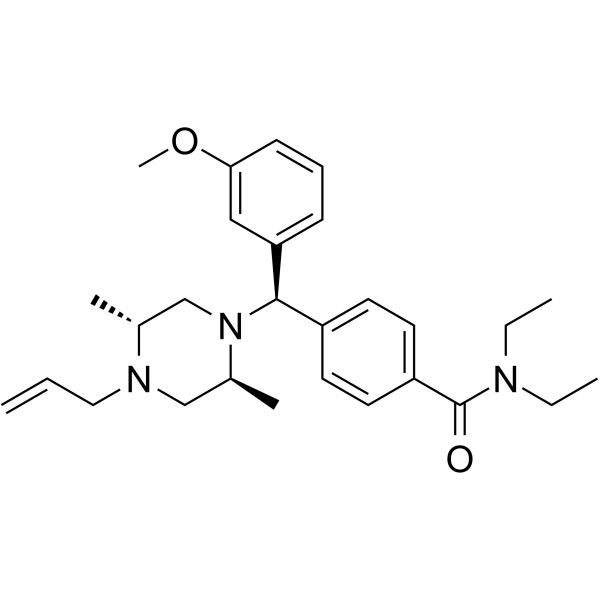
-
- HY-116143
-
|
|
MAGL
|
Metabolic Disease
|
|
SAR127303 is an orally active, selective, competitive monoacylglycerol lipase (MAGL) covalent inhibitor with IC50s of 3.8 nM and 29 nM for mouse and human MAGL, respectively. SAR127303 potently elevates hippocampal levels of 2-AG in mice. SAR127303 decreased long term potentiation (LTP) of CA1 synaptic transmission and acetylcholine release in the hippocampus. SAR127303 produces antinociceptive effects in assays of inflammatory and visceral pain. SAR127303 slows down epileptogenesis .
|
-

-
- HY-147512
-
|
|
Cannabinoid Receptor
|
Inflammation/Immunology
|
|
CB1/2 agonist 1 is a potent and cross the blood-brain barrier CB1/2 agonist with EC50s of 56.15, 11.63 nM for CB1R and CB2R, respectively. CB1/2 agonist 1 reduces glutamate release and LPS-induced activation of microglial cells. CB1/2 agonist 1 shows anti-inflammatory and antinociceptive effects. CB1/2 agonist 1 has the potential for the research of multiple sclerosis .
|
-

-
- HY-18099
-
S1RA
1 Publications Verification
E-52862
|
Sigma Receptor
5-HT Receptor
|
Neurological Disease
|
|
S1RA (E-52862) is a highly selective σ1 receptor (σ1R) antagonist with Kis of 17 nM and 23.5 nM for human σ1R and guinea pig σ1R, respectively. S1RA has Moderate antagonistic activity for human 5-HT2B receptor (Ki= 328 nM). S1RA has antinociceptive effects in neuropathic pain models. S1RA prevents mechanical and cold hypersensitivity in Oxaliplatin (HY-17371)-treated mice .
|
-
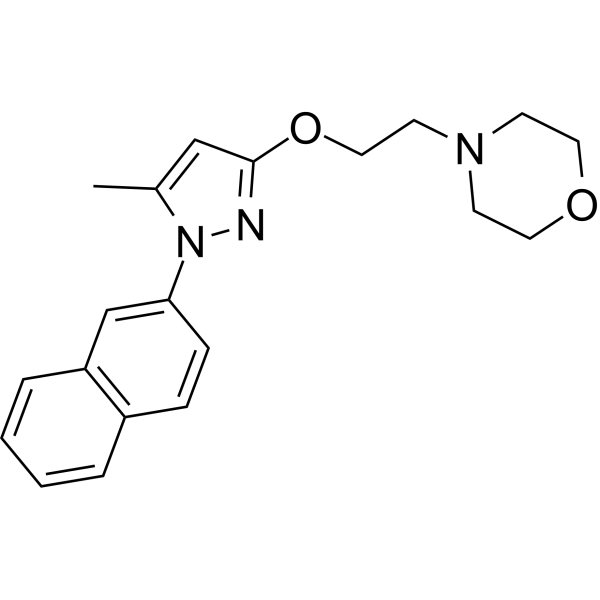
-
- HY-N6972
-
|
|
SARS-CoV
Cytochrome P450
Apoptosis
Parasite
|
Infection
Inflammation/Immunology
Cancer
|
|
Cepharanthine is a natural product that can be isolated from the plant Stephania cephalantha Hayata. Cepharanthine has anti-severe acute respiratory syndrome coronavirus 2 (anti-SARS-CoV-2) activities. Cepharanthine has good effective in suppressing viral proliferation (half maximal (50%) inhibitory concentration (IC50) and 90% inhibitory concentration (IC90) values of 1.90 and 4.46 µM . Cepharanthine can also effectively reverses P-gp-mediated multidrug resistance in K562 cells and increase enhances the sensitivity of anticancer agents in xenograft mice model . Cepharanthine shows inhibitory effects of human liver cytochrome P450 enzymes CYP3A4, CYP2E1 and CYP2C9. Cepharanthine has antitumor, anti-inflammatory and antinociceptive effects .
|
-

| Cat. No. |
Product Name |
Target |
Research Area |
| Cat. No. |
Product Name |
Category |
Target |
Chemical Structure |
| Cat. No. |
Product Name |
Chemical Structure |
-
- HY-78131BS
-
|
|
|
(R)-(-)-Ibuprofen-d3 is the deuterium labeled (R)-(-)-Ibuprofen. (R)-(-)-Ibuprofen is the R enantiomer of Ibuprofen, inactive on COX, inhibits NF-κB activation; (R)-(-)-Ibuprofen exhibits anti-inflammatory and antinociceptive effects.
|
-

-
- HY-N0092S1
-
|
|
|
Inosine- 13C is the 13C labeled Inosine. Inosine is an endogenous purine nucleoside produced by catabolism of adenosine. Inosine has anti-inflammatory, antinociceptive, immunomodulatory and neuroprotective effects. Inosine is an agonist for adenosine A1 (A
|
-

-
- HY-N0092S4
-
|
|
|
Inosine-13C3 is a 13C-labeled Inosine that can be used in pharmacokinetic studies of Inosine. Inosine is an agonist of adenosine receptors A1R and A2AR with anti-inflammatory immunomodulatory, antinociceptive and neuroprotective effects .
|
-

-
- HY-N0092S
-
|
|
|
Inosine-2,8-d2 is the deuterium labeled Inosine. Inosine is an endogenous purine nucleoside produced by catabolism of adenosine. Inosine has anti-inflammatory, antinociceptive, immunomodulatory and neuroprotective effects. Inosine is an agonist for adenosine A1 (A1R) and A2A (A2AR) receptors[1][2][3].
|
-

-
- HY-N0092S3
-
|
|
|
Inosine-13C10,15N4 is 13C and 15N labeled Inosine (HY-N0092). Inosine is an endogenous purine nucleoside produced by catabolism of adenosine. Inosine has anti-inflammatory, antinociceptive, immunomodulatory and neuroprotective effects. Inosine is an agonist for adenosine A1 (A1R) and A2A (A2AR) receptors .
|
-

Your information is safe with us. * Required Fields.
Inquiry Information
- Product Name:
- Cat. No.:
- Quantity:
- MCE Japan Authorized Agent:


























































